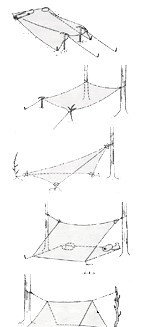LNT走過不留痕:戶外道德準則
走過不留痕”戶外道德準則框架
The Leave No Trace Principles of outdoor ethics form the framework of Leave No Trace's message:
事先籌備
在堅實的地表行走與露營
處理廢棄物
發現的,留存原貌
讓營火的影響減至最低
尊重野生動物
想想其他人
Plan Ahead and Prepare
Travel and Camp on Durable Surfaces
Dispose of Waste Properly
Leave What You Find
Minimize Campfire Impacts
Respect Wildlife
Be Considerate of Other Visitors
事先籌備
Plan Ahead and Prepare
- 了解前往地的特殊規定。
- 做壞天氣、可能危險及緊急狀況準備。
- 避開尖峰時段。
- 以小團隊前往。分散大團體,四至六人一組。
- 把垃圾量減至最低。
- 用地圖及指南針,避免人為信號:漆、石堆或路條。
- Know the regulations and special concerns for the area you'll visit.
- Prepare for extreme weather, hazards, and emergencies.
- Schedule your trip to avoid times of high use.
- Visit in small groups. Split larger parties into groups of 4-6.
- Repackage food to minimize waste.
- Use a map and compass to eliminate the use of marking paint, rock cairns or flagging.
在堅實的地表行走與露營
Travel and Camp on Durable Surfaces
- 堅實的地包括步道、巖石、碎石地、幹草或雪地。
- 保護水源區,紮營離湖或河至少兩百尺。
- 找營地不是做營地,換營地更不必要。
在密集使用區
- 使用現存步道及營地
- 以一列行走步道,即使濕地或泥濘地。
- 營地範圍盡量少,活動集中在無植物生態處。
在未開發地區
- 避免開發出營區或步道。
- 避免使用剛被影響之處。
- Durable surfaces include established trails and campsites, rock, gravel, dry grasses or snow.
- Protect riparian areas by camping at least 200 feet from lakes and streams.
- Good campsites are found, not made. Altering a site is not necessary.
In popular areas:
- Concentrate use on existing trails and campsites.
- Walk single file in the middle of the trail, even when wet or muddy.
- Keep campsites small. Focus activity in areas where vegetation is absent.
In pristine areas:
- Disperse use to prevent the creation of campsites and trails.
- Avoid places where impacts are just beginning.
申明:本站發佈所有文章、圖片資源内容,如無特殊説明或標注,均爲采集或轉發網絡資源。如若本站所發之内容侵犯了原著者或所有權主體的合法權益,可聯絡本站刪除。



![蜈蚣詳解[圖]](http://www.571400.cn/attachment/091016/f7851d78e3.jpg)
![詳解蜈蚣 [圖]](http://www.cnfisher.com/uploadfile/2012/0720/20120720094223787.jpg)


![[戶外拓展訓練]聯體足球](http://www.571400.cn/attachment/100102/fd60c66099.jpg)
![[戶外拓展訓練]頂屁股](http://www.571400.cn/attachment/100102/dcda32f067.jpg)

